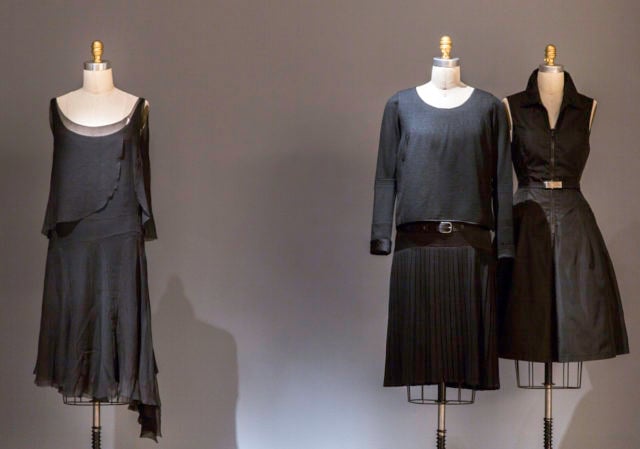Opinion
Chanel’s Haute Couture Was Cut from Marxist Cloth
THE DAILY PIC: At the Met’s Costume Institute, 1920s outfits by Chanel are truly revolutionary.

THE DAILY PIC: At the Met’s Costume Institute, 1920s outfits by Chanel are truly revolutionary.

Blake Gopnik

THE DAILY PIC (#1602): “Manus x Machina: Fashion in an Age of Technology,” the latest splashy display at the Costume Institute of the Metropolitan Museum of Art in New York, is overflowing with insane one-percenter extravagance: 3D-printed dresses straight from a Star Wars bar scene; haute-couture gowns that, at even one dollar per hand-sewn sequin, would add up to more than most mortgages.
But by far – by far – the most adventurous clothes on display are the almost unadorned black outfits at the left of today’s Daily Pic, which were on offer from Chanel in the mid-1920s. (The dress at right shows Miuccia Prada mining a similar vein in her great moment in the 1990s.)
Compare these Chanels from the Jazz Age to the heavy Edwardian gowns from a dozen years earlier, before the massive disruptions of World War I, and it’s hard to imagine what women could have made of the new styles. Chanel’s undecorated suits and dresses, in a uniform Henry Ford black, must have felt like history’s greatest fashion quake, and that’s pretty much what they were. They were not merely the latest spin on fancy frippery, like almost all the more recent items on display at the Met, but a profound disturbance in the nature of clothes.
I believe that disturbance went much deeper than the fabric it was cut from. It’s hard for us to recall, but a vast new range of far-left ideas had utterly transformed how people thought in the 1920s. From manual laborers to the academic and cultural elites, everyone was acutely aware, as we barely have been since, of modern society’s deep inequities and of new plans for solving them – plans which were actually being put into effect, however badly, in many parts of the world. Coco Chanel may not (or may) have been consciously aware of such ideas, or of how they were chaneled (sorry) by her company’s clothes. After all, she was designing for a tiny moneyed elite, like all the other haute-couture mavens in the Met show.
But unlike the patrons of today’s high fashions, when Chanel’s first millionaire clients put on her dresses they would have felt that something – maybe even their time – was up. (© The Metropolitan Museum of Art)
For a full survey of past Daily Pics visit blakegopnik.com/archive.